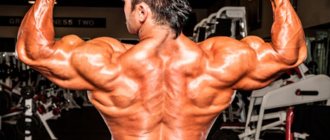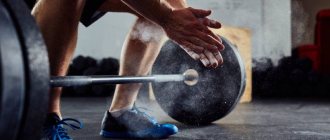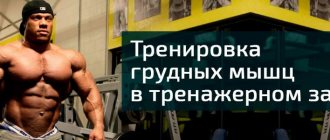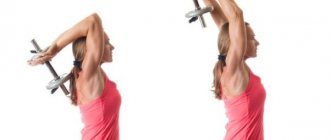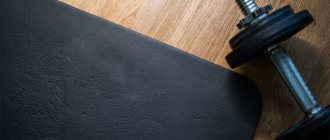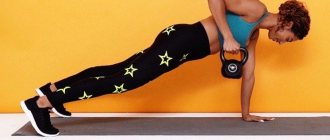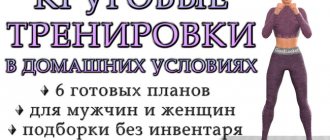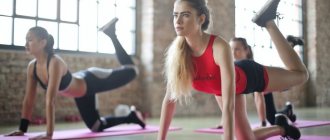© nikolas_jkd — stock.adobe.com
Share:
Back training is a fundamental factor in the further development of an athlete’s muscle growth. The back corset is involved in almost all basic exercises, and in terms of size this muscle group takes second place, second only to the legs. How to train correctly and what exercises to choose for the back? Let's look further.
General anatomy
Before choosing exercises to strengthen your back muscles, let's understand the anatomy of this part of the body. As with the pecs, the back is not one muscle, but a group of different muscles responsible for different joints. Most of them are deep back muscles, responsible for fine motor skills of the torso. It makes no sense to train them separately, since they are already involved in almost all exercises to strengthen the back.
If you do not take into account the deep muscles, then all the back muscles can be divided into several groups:
- The latissimus dorsi muscles are responsible for bringing the arms together. They consist of two bundles: the middle one (responsible for the thickness of the back) and the lateral one, located next to the serratus muscles (responsible for the appearance of the so-called “wings” of the athlete).
- The rhomboid muscles of the back are located in the upper layer and run along the entire back. Responsible for retracting the scapula backwards. Consist of three different beams, each of which works with any movement.
- Trapezius muscles of the back. Responsible for rotation in the shoulder joint. They consist of three beams: middle, upper and lower.
- Lumbar muscles. Despite the fact that they cannot be called the largest, they are responsible for stabilizing the body and require separate in-depth study, because form a muscular corset that holds the human body in a straight position. Participate in almost all exercises as a fixing stabilizer of the body.
- The trunk extensor muscles are thin muscles that run along the entire spine. Correct posture and keep the body straight. Participate in all types of rows with a tilted body.
To work all these muscle groups, you need an integrated approach. In this case, it is advisable to work each muscle group from different angles, which will ensure local growth of the muscle group.
© Artemida-psy — stock.adobe.com
General recommendations for back training
The general principles of back pumping are very specific and require strict and strict adherence to certain rules.
- Do not use basic exercises in the first months of training. The reason is that under large muscle groups lie a huge number of small muscles, which are easy to injure if the muscle corset is not developed enough. This is why any trainer will recommend using back exercises with dumbbells or exercises on a block machine in the first month in the gym. Isolation load allows you to use fewer small muscle groups and has a fixed amplitude, which is safe when working with light weights. Only when you have prepared your muscle corset for serious loads can you proceed to the classics in the form of deadlifts and bent-over rows.
- If you want to increase the result of the deadlift, do not use the deadlift. No matter how strange it may sound, the most powerful exercise for the back muscles - the deadlift - does not allow for a constant progression of loads. This is because the psoas and accessory muscles tire faster than the rhomboids. Therefore, if you have hit a strength plateau, you should work on all the auxiliary back exercises in the gym and only then return to the deadlift.
- Strict technique. Unlike strained muscles of the arms or legs, sprains and micro-dislocations of the back are fraught with prolapse of a hernia or problems with the spine in the future. It is better not to chase weights and not to perform exercises in the borderline technique: this is dangerous to your health.
- Large muscles respond well to heavy weights. Even if constant growth is not your goal, remember that high repetitions with low weight will not help train your back.
- Do not use a safety harness. Although this is an important safety feature in training, the belt restricts movement in the lower back, causing the psoas and back extensor muscles to stop participating in the exercise. It is better to use lighter weights and choose a smoother progression of loads.
- Base + insulation. Like any other large muscle group, the back is trained in 2 stages. First, basic pre-exhaustion with extremely heavy weights, then targeted strengthening of the muscle group in the simulator. This provides greater load, and therefore greater hypertrophy.
- Don't use two basic exercises on the same day. Avoid combining deadlifts and bent-over rows, as well as deadlifts and sumo rows.
The 100 rep principle
This is the very method with which Sergio Oliva achieved a massive back and made it the dominant muscle group, but not every athlete can do 20 pull-ups. An alternative to this is to replace the horizontal bar with a gravitron, overhead block or vertical hummer. The weight is selected so that you can perform 12-15 repetitions. The task is to do a total of 100 repetitions, for an unlimited number of approaches. This should be done before any workout, even if your back was trained yesterday and it did not have time to recover.
Through trial and error, you need to find your own back training method. It may be worth combining 2 methods at once. For example, perform 100 pull-ups daily and alternate between heavy and easy workouts. For me, this method allowed me to make my back significantly wider and more prominent.
Exercises at home
It's not easy to train your back at home. This is due to the anatomy of movements. It is not possible to repeat them without weighting or a special load. And those exercises that allow you to load your back using your own body without special equipment are ineffective when it comes to serious loads. Let's look at some basic back exercises at home.
- Pull-ups. A serious complex exercise that can be performed even without a horizontal bar. It is enough to have a strong door that can support your weight. You can also use any other similar devices.
- Boat. A good exercise that develops the rhomboid and latissimus dorsi muscles. The technique is extremely simple: lie on the floor, slightly raise your outstretched arms and legs.
- Bridge. A static exercise with your own weight that perfectly develops back extensors without injury. Suitable for recovery or maintenance training. It is recommended for anyone who wants to develop not only strength, but also flexibility of the back muscles.
© vladimirfloyd — stock.adobe.com
- Farmer's Walk. This exercise is in the home category because it can be performed with any home weight. All you need to do is take 2 thick bags, fill them evenly with books and get started. Develops all muscle groups with an emphasis on the trapezius muscles. There are options in the form of lunges, which additionally load the leg muscles.
Warm-up
Before every strength training session, a good warm-up is required. First you need to do some cardio. This can be done on any equipment:
- treadmill;
- elliptical trainer;
- exercise bike
Cardio is needed in order to:
- accelerate our main muscle - the heart;
- warm up the joints and ligaments, which will bear a heavy load during training.
For such a warm-up, 5-10 minutes will be enough. After a good warm-up, it's time to stretch the muscles. This is important in preparing them for the hard work ahead. There are key rules:
- you need to stretch from top to bottom;
- You can’t hold your breath;
- you need to feel a slight stretch;
- The duration of each exercise is 10 seconds.
Exercises with non-standard equipment
If you have a chest expander, fitball or rubber band (rubber loop) on hand, choose the appropriate one from the exercises presented. They will significantly diversify your load and allow you to work your muscles at a more natural angle. Suitable for both home and hall.
- Reduction of shoulder blades with a chest expander. A unique exercise that simultaneously works the rhomboid and latissimus dorsi muscles. It is considered one of the heaviest. It has the maximum natural amplitude for a person.
- Pull your own weight using a rubber band. A lightweight version of pull-ups and a complete analogue of the overhead pull-down.
- Horizontal pull-ups with a tourniquet. Analogous to the thrust of a horizontal block. One side of the tourniquet is tied to the battery (door handle, etc.), the further task is to sit on the floor and pull your body towards the projectile, completely raising your body and without bending your legs at the knee joint.
- Hyperextension on a fitball.
Recipes for healthy eating
Baked sea bass in foil
- 46.9 g Protein
- 4.5 g Fat
- 13.5 g Carbohydrates
- 295 kcal
45 min.
- #second course
- #dietary
- #baking
- #lemon
- #low calorie
- #dinner
- #perch
- #fish
- #soy sauce
- #dinner
Other recipes
Train your latissimus muscles
Creating a V-shaped silhouette by working the lats requires using a wide grip. How to quickly build up your back muscles? For example, wide-grip pull-ups are one of the best ways to develop your upper lats.
The person fully extends the fascia and then lowers down in two ways: vigorously or slowly with a break at the end. Both should be used interchangeably when teaching.
